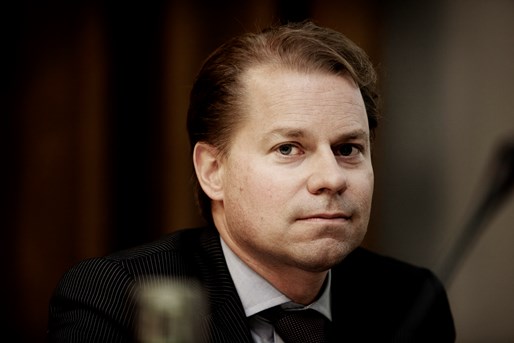Doping: Dispatches from the frontline

Olivier Niggli, WADA’s Legal Director, warned that “science alone will not eradicate cheating”. Photo by Tine Harden
05.10.2011
By Marcus HoySince its foundation in November 1999, the World Anti Doping Agency (WADA) has been the recognized international authority in the fight against the use of illegal drugs in sport, and its World Anti Doping Code has been revised on a number of occasions since its adoption in 2004.
Olivier Niggli, WADA’s Legal Director, told Play the Game that WADA now co-operates with 122 nations and the code will be subject to further review next year. However, while many advances in testing have been made, he warned, “science alone will not eradicate cheating”.
Speaking on behalf of WADA’s Director General David Howman, Niggli pointed to recent advances in doping detection and prevention techniques such as the so-called "biological passport”, which monitors athletes throughout their sporting careers.
However, as WADA’s detection techniques become more sophisticated, there is an “increased sophistication at the high end of sport”. In other words, the “cheats are getting better at cheating”.
Many obstacles remain in the testing procedures, Niggli said, not least the fact that scientists are increasingly reluctant to be placed in a position where their testing procedures are challenged in court.
While WADA enjoys a positive relationship with the pharmaceutical industry, 25 percent of the world’s pharmaceuticals come from the black market and are readily available online. The sporting world is under threat from the criminal underworld and illegal gamblers, and doping was a tool they used, Niggli said.
WADA’s anti doping efforts are not only focusing on athletes, he said, but also seeking to ensure that all those involved in doping are subject to adequate penalties. WADA is also working to ensure that evidence of doping is obtained through other methods than drug testing.
Sketchy replies about tests
Hajo Seppelt, a journalist working for German TV station ARD, spoke of his involvement in a recent project which asked international sports federations detailed questions about how many samples they were taking from their athletes, and what they were doing with these samples.
The federations included the International Association of Athletics Federation (IAAF), International Cycling Union, (UCI), world football’s governing body, FIFA, the International Skating Union (ISU) and FINA, the governing body of aquatic sports.
The quality of answers provided by the federations was mixed, Seppelt said.
Many did not fully answer questions related to what types of blood samples were taken, and which tests were carried out. FINA’s reply was very superficial, he said and very little usable information was provided by the UCI.
Even when samples were taken, Seppelt said, the research pointed to a lack of testing for two of the most common doping substances, EPO and growth hormones.
While he had little doubt that international federations were often serious in their commitment to the fight against doping, he warned that the money and resources to conduct an effective testing program were often not available.
The testing system is a mess
Jonas Baer-Hoffmann, General Secretary of the German Basketball Players’ Association, told Play the Game that he supported an effective anti-doping system as long as it respected the rights of athletes.
Sportsmen and women are generally willing to accept some infringements to their rights, he said, if they helped prove that the athletes and their sport were clean. But if the system is ineffective, and invasive and stressful, he said, athletes would be reluctant to participate.
While athletes are legally supposed to give their consent to testing, in reality no real consent exists as athletes are faced with a choice of being tested or ending their careers.
A study undertaken by his organisation found that the testing and reporting system across the European continent was “a mess”, he added.
“We need to take a hard look at out-of-competition testing and in-competition testing and see how effective it is. Any testing system should have a “solid legal basis” he added.
An anti-epidemic approach
According to Perecles Simon of the Johannes Gutenberg-University’s Department of Sports Medicine and Rehabilitation the spread of the doping culture resembles the spread of a “highly commutable epidemic”.
An epidemic occurs at a higher-than-expected frequency in a defined human population, he explained, and the rise of doping in fitness and recreational sports as well as elite sport fits this definition. If this is the case, he said, doping should be tackled by taking an “anti-epidemic approach” – that is, isolating the source and route of transmission.
“Whether it is the coaches, the doctors, whatever is the source, we need to know where it is” he said. “We need to find out the route of transmission, and we need to spend money on fighting this”.





